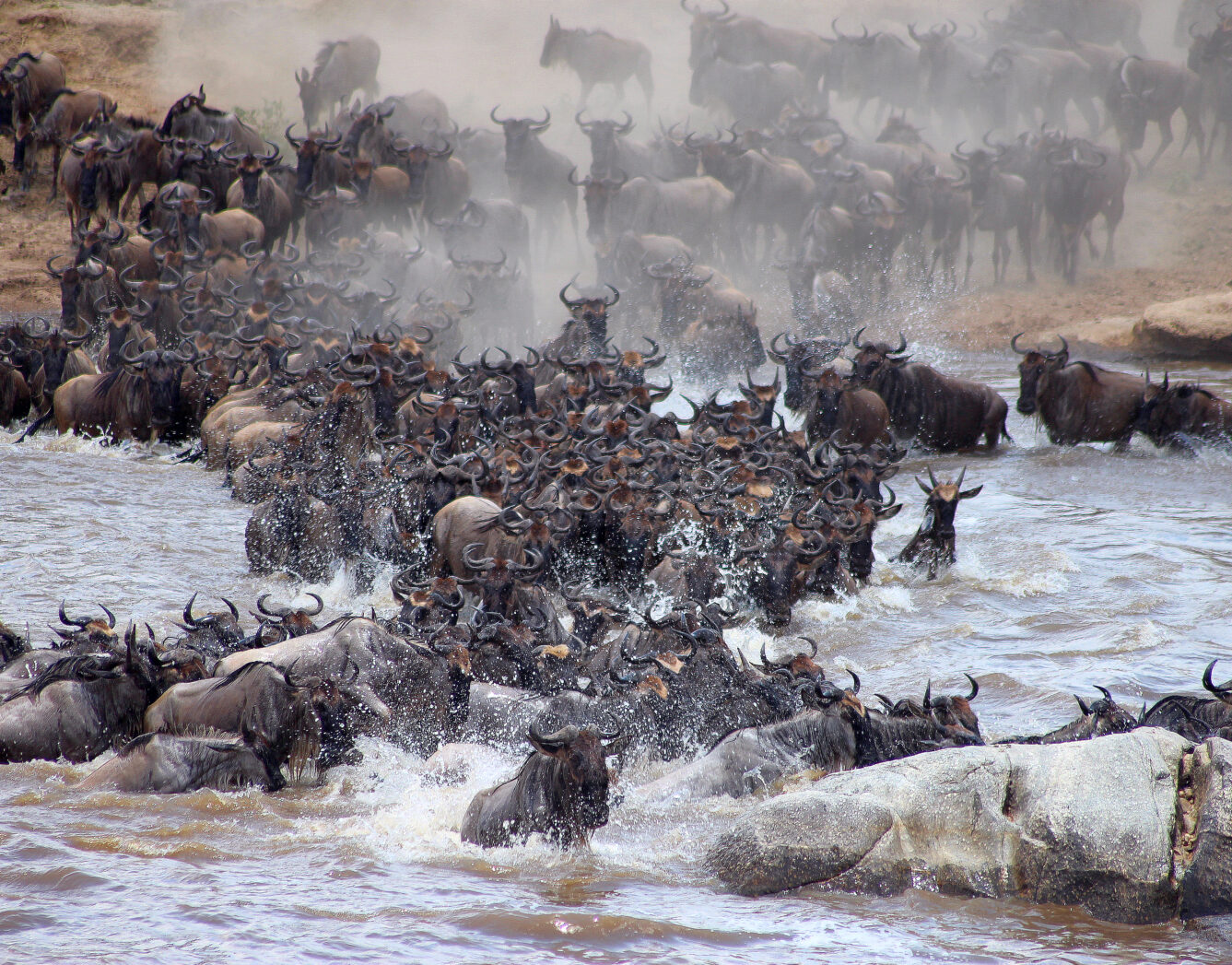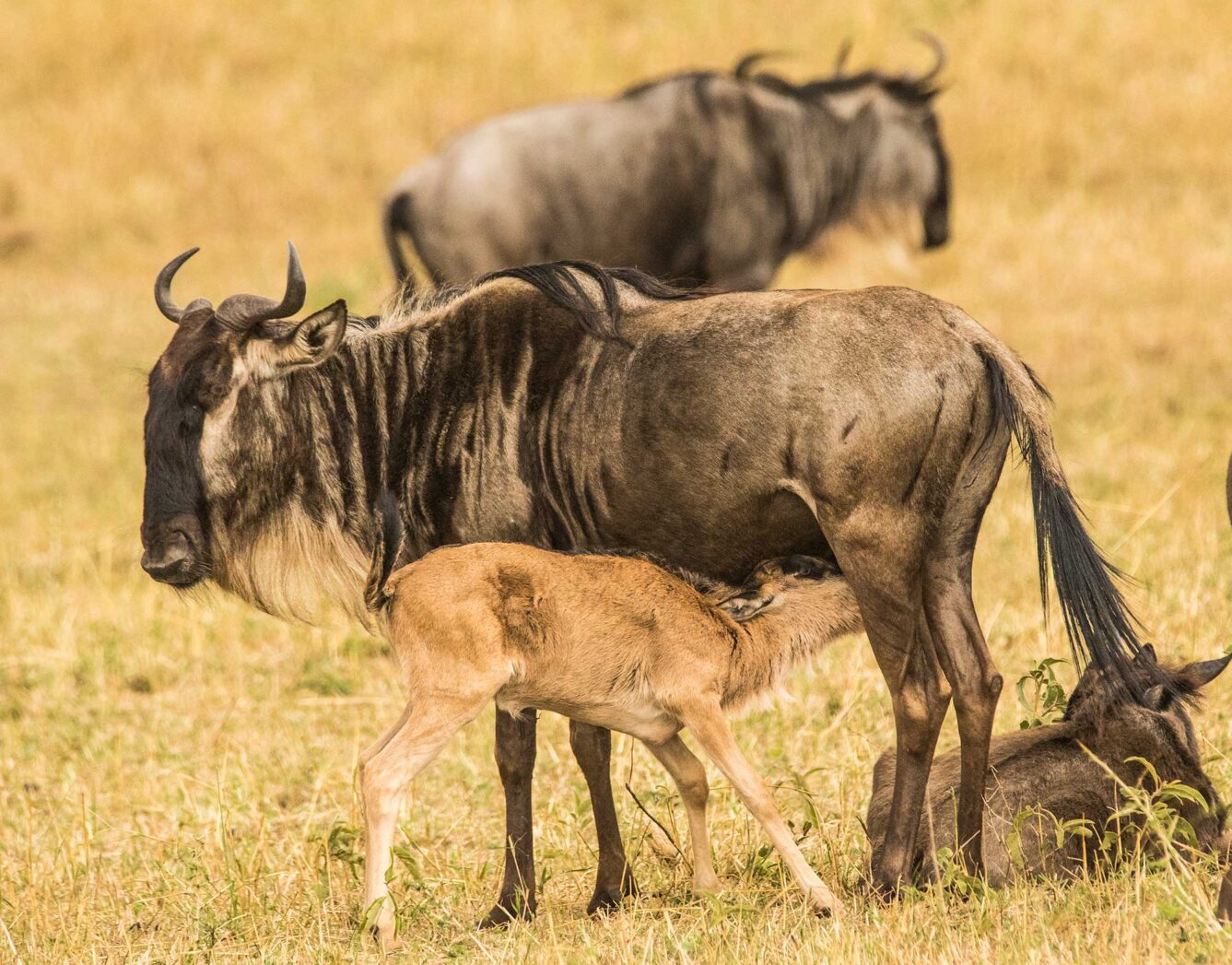The Serengeti and Masai Mara ecosystem forms the backdrop to one of the most breath-taking events in the entire animal kingdom – the constant movement of wildebeest and zebra herds, wheeling through Kenya and Tanzania. Anyone who has watched a crocodile homing in on wildebeest at a river crossing, or the herds willing each other to take the plunge, will testify to the life-changing drama. Yet even without a grandstand view of crossings, predators and births, simply following the countless beasts is an extraordinary experience and the highlight of any African adventure.
Migration Map
Where? When?
These are the two biggest questions we are asked, every year.
When is the best time to visit Bushtops? And where will the migrating wildebeest and zebra actually be, month by month?
If you know Africa (or read our reports) you’ll know that nothing is ever certain and everything can change. Migrations follow a broad clockwise pattern, but it’s rainfall and grass that determine the route and timings. Human insights and constant tracking help us anticipate movements, but we have precisely no control over what the herds will do next. What we can do is show the herds’ locations at any time and their likely direction of travel. Our interactive ‘WOW’ (Where’s Our Wildebeest) map gives an overview, relative to the location of our three Bushtops Camps.
July - October
Migration river crossings
If your dream is to watch armies of vast grass-eaters splash past crocodiles, Mara Bushtops in Kenya and Serengeti Bushtops in Tanzania offer the perfect locations. From each side of the river borders, we have a prime view of multiple crossing points.
January - March
The arrival of the Wildebeest calves
A Tanzanian phenomenon is the birthing season, which takes place in the southern Serengeti. For anyone wanting to highlight the start of new lives – and the dramas surrounding them – Roving Bushtops provides an ideal base, having moved from the central Serengeti to our second home in the south.





